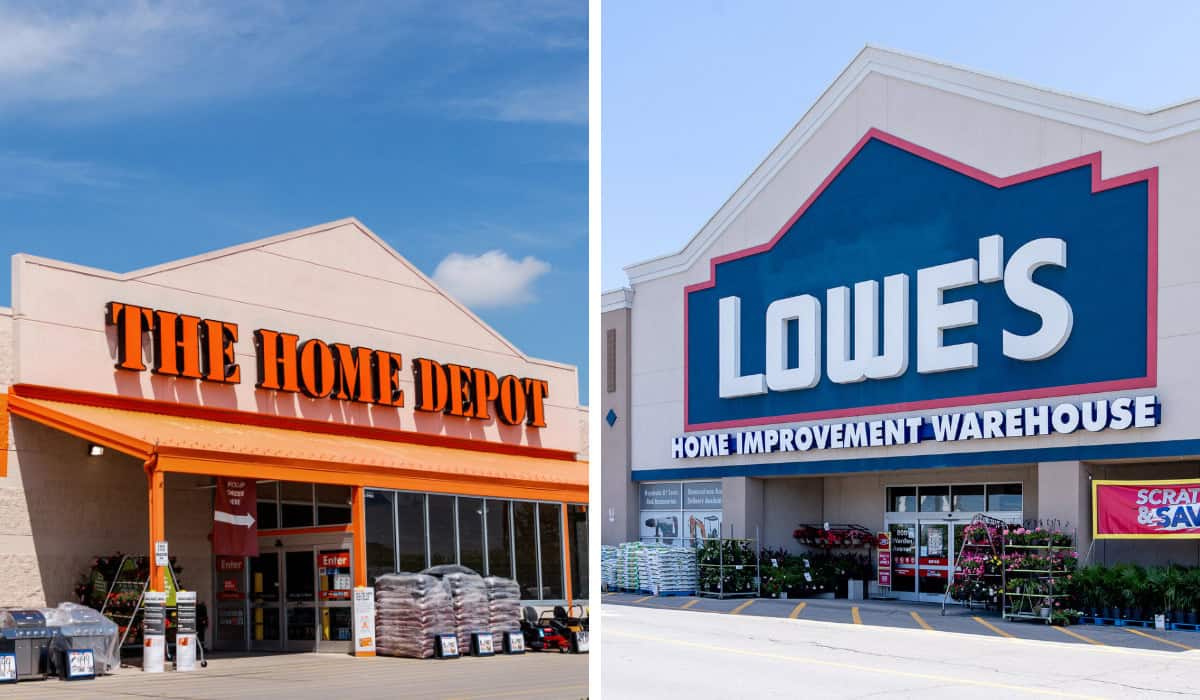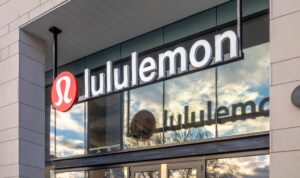
jetcityimage2/Depositphotos.com | iStock.com/JHVEPhoto
February 28, 2025
Are Home Improvement Chains Too Pessimistic Over Recovery Prospects?
Both Home Depot and Lowe’s saw quarterly same-store sales return to growth after eight straight quarters of declines but offered soft guidance for the current year due to the fallout from ongoing high mortgage rates.
Home Depot’s same-store sales grew 0.8% in the fourth quarter. On an analyst call, the home improvement chain’s CEO Ted Decker said results exceeded expectations “as we saw greater engagement in home improvement spend, despite ongoing pressure on large remodeling projects.”
Ten of Home Depot’s 16 departments posted positive comps, but weakness was seen in purchases supporting larger discretionary projects, such as kitchen and bath remodels, where customers typically use financing. For the current year, Home Depot forecast same-store sales growth of only 1%, with management assuming no change in the mortgage environment nor improvements in housing turnover.
A report last year from brokerage Redfin found only 25, or 2.5%, of every 1,000 U.S. single family homes and condos/townhouses changed hands in the first eight months of 2024, marking the lowest turnover rate in at least three decades.
The lean turnover rate was attributed to elevated mortgage rates, with more than three-quarters of mortgaged U.S. homeowners having secured a rate under 5%, below current rates between 6% and 7% in recent months. This creates a “lock-in effect,” where many homeowners hold off on selling and buying another home using a higher rate and also defer major DIY projects with no near-term plans to sell. Other factors feeding lower housing turnover include record high prices for U.S. homes, significantly smaller housing supply versus pre-pandemic levels, and economic and political uncertainty.
On the call, Decker said Home Depot’s customer remains “very healthy,” with rising incomes, home equity values vaulting 50% since the end of 2019, and the benefit from appreciating stock market values. He suspects homeowners will eventually tap that expanding home equity to tackle larger remodeling projects once they realize rates are “highly unlikely” to return to lows seen in recent years. Decker added, “We’re just not sure that turn comes in 2025 at a dramatically accelerated pace.”
Fannie Mae predicts that the 30-year mortgage rate will remain at or above 6.5% for all of 2025.
Lowe’s same-store sales inched up 0.2% in the fourth quarter, also above expectations, as mid-single digit growth with its Pro customers — or professionals such as contractors, landscapers, plumbers, and electricians — offset weakness in discretionary spending from its DIY homeowner customers, particularly around bigger ticket projects.
For the current year, Lowe’s forecast same-stores sales to be flat to up 1%, with officials expecting the broader home improvement market to be flat, driven by repair and maintenance rather than upgrade projects.
Marvin Ellison, president and CEO of the home improvement chain, noted on an analyst call that several factors, including home price appreciation, disposable personal income growing faster than inflation, and the oldest existing housing stock in U.S. history, will continue to lead homeowners to invest in home repairs and upgrades. He added, “And we anticipate that some homeowners will begin to tap into record levels of equity in their homes to fund larger renovation projects.”
However, he pointed out that mortgage rates are higher than they’ve been in more than two decades. This in turn is “creating a significant gap between today’s rate for homebuyers and the lower rates many homeowners currently enjoy,” leading to the lowest pace of existing home sales in the U.S. in nearly 30 years. He added, “Although it’s difficult to predict the timing of when we’ll see lower rates and increased home improvement demand, we remain confident in the medium- to long-term outlook of our business.”
Discussion Questions
Are Home Depot and Lowe’s predictions of minimal or flat growth for the current year setting the bar low or highly likely to happen?
What’s your prediction for mortgage rates this year and a potential recovery in housing turnover and home remodeling activity?
Poll
BrainTrust
Brian Numainville
Principal, The Feedback Group
John Hennessy
Retail and Brand Technology Tailor
Georganne Bender
Principal, KIZER & BENDER Speaking
Recent Discussions







No, both Home Depot and Lowe’s are being realistic. While Q4 demand picked up a bit – thanks in part to a little more activity in the housing market – there are a lot of headwinds from various factors. Interest rates continue to act as a drag on house sales and big project financing. Consumer confidence remains changeable. And the impact of tariffs, especially on products like lumber, could have a dampening impact. Put all of those things together and you have a recipe for a soft, rather than a robust and rapid, recovery.
Highly likely. Creeping pessimism is hardly conductive to a building binge. And with lumber and steel – the two cornerstones of construction – about to be hit with tariffs, that can only worsen (Lowe’s and Home Depot may sell more dollars worth of 2×4’s and fittings, but there will be fewer of them).
The historically low housing turnover rate creates a specific headwind for Lowes and Home Depot. Housing sales help DIY stores on both sides of the transaction. The seller invests in projects they have put off to prepare the house for sale. The buyer then invests in improvements to customize the house to their preferences. An increase in housing sales will be a good growth indicator for DIY stores. Until then, conservative sales forecasts are appropriate.
Given broad outlook on the economy, Lowe’s and Home Depot look to have correctly forecasted. Early economic indicators are even suggesting a negative GDP contraction of 1.5% for January-March. Until interest rates go down and tariffs settle in, growth in home projects will be flat. But if government continues to significantly reduce spending and enacts a balanced budget this year, it could help interest rates drop sooner.
With the inflated price of buying a home these days, who has money for extensive remodeling? Existing homeowners are waiting things out before diving in to expensive remodeling projects. Home Depot and Lowes predictions are both realistic and fair.
These look like accurate and realistic predictions when you consider the current economic situation and potential impact from tariffs.
Interest rates, inflation, and consumer confidence will all play a key role in determining whether home remodeling projects recover by 2025.
Financing renovations could be more accessible if interest rates are low, encouraging more homeowners to remodel. A stable job market and improved consumer confidence would also likely boost home improvement spending.
The rising value of homes and increased sales activity of the housing market can also increase demand for remodeling projects. To maximize their property value or attract potential buyers, homeowners may upgrade their properties.
However, these companies may face challenges such as supply chain disruptions, which can lead to delays in stocking essential materials and tools. Additionally, fluctuating raw material costs could impact pricing strategies, potentially affecting profit margins.
Furthermore, increased competition from online retailers could pressure traditional brick-and-mortar stores like Lowes and Home Depot to innovate and enhance their digital presence.
Offering flexible financing options and competitive interest rates could help improve consumer confidence, making renovations more financially viable.
Additionally, providing clear and transparent communication about supply chain improvements and material availability can reassure customers about project timelines. Implementing loyalty programs and personalized customer service can further enhance trust and encourage repeat business.
They are definitely not pessimistic as it stands right now. High interest rates, coupled with higher prices due to potential tariffs put a damper on larger home projects.